#20th century author
Text
"Some long-forgot, enchanted, strange,
Sweet garden of a thousand years ago,"
~ Edna St. Vincent Millay, from "Interim"
via southerncrossreview.org
#edna st. vincent millay#quotes#literature quotes#literary quotes#lit quotes#quotations#literary quotations#fragments#20th century poetry#20th century literature#american literature#american lit#poetry#poem#american poetry#american author#poetry fragments
739 notes
·
View notes
Text
"I never wish to be easily defined. I'd rather float over other people's minds as something strictly fluid and non-perceivable; more like a transparent, paradoxically iridescent creature rather than an actual person."
-Franz Kafka (diary of March 24th 1914)
#franz kafka quotes#franz kafka#daily kafka#kafka diaries#kafkaesque#kafka#the metamorphosis#19th century literature#19th century novels#20th century literature#literary#german literature#literature#literature quotes#classic literature#austrian literature#author#writing#writers and poets#philosophy novel#books and novels#novelist#books & libraries#book extract#book quote#book quotes#books and reading#poems and quotes#quotes#frenchnewwaves
276 notes
·
View notes
Text
The Five Stages of Reading Albert Camus
1. The Discovery – ”The Stranger” (1942)
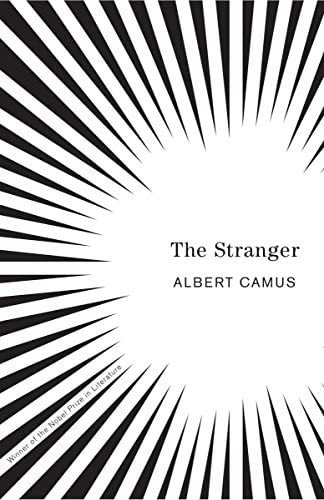
„The Stranger” is unquestionably the best choice for anyone who wants to get to know Albert Camus. It's so simple that it fools you at first. You think it's going to be an easy read, but when you finish the book and put it down, you don't even know your name or if it even matters to have a name. It will probably keep your mind busy for months and make you think about the true meaning of life. You will most likely never be the same person again.
2. Falling in Love – ”Betwixt and Between” (1937) // ”The Fall” (1956) // ”Exile and the Kingdom” (1957)
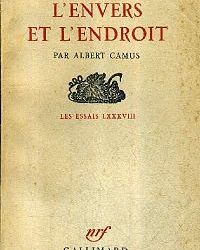

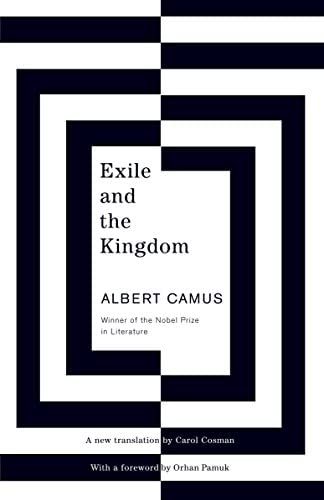
After "The Stranger" has had time to settle and stick in your mind (a process that takes about six months to a year), it's time to explore other writing. Camus doesn't use the same language in every book, so it's important to be careful what you choose to read after. The best options to fall irrevocably in love with this French philosopher are ”Betwixt and Between”, which is his very first published book, ”The Fall”, which offers a very interesting narrative perspective, or ”Exile and the Kingdom”, his only collection of short stories. After going through these, your heart will be caught in the nets of love for Camus.
3. The Surprise – ”The Plague” (1947) // ”A Happy Death” (written 1936–38, published 1971) // ”Summer” (1954) // ”Nuptials” (1938)



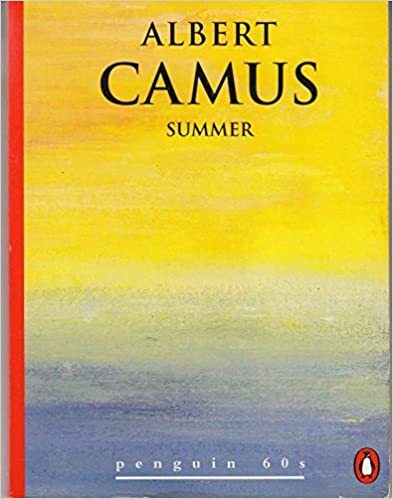
After the reader has gone through the above books, he will have the impression that he knows Camus. Now is the time for him to have the surprise of his life. Camus managed the feat of not giving the audience the same thing twice. That is why each of his writings is unique. Some are easier to read and digest, some are not. At this stage, it is time to get acquainted with its more difficult side. "The Plague" is a story that shakes you to the core and is difficult for even the best readers to get through. ”The Happy Death” should never have seen the light of day, being the first version of what we now know as The Stranger. "Summer" and "Nuptials" are dubbed essays and are similar in format to ”Betwixt and Between”, but here Camus approaches a completely new language, so poetic and refined that it instantly wins you over. Only after the reader goes through these books can he say that he understands a part of Camus.
4. Not just a writer – ”The Myth of Sisyphus” (1942) // „The Rebel” (1951) // Theatre Plays // Journalism Articles
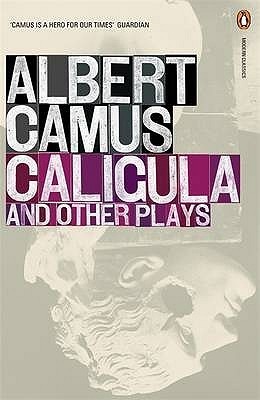
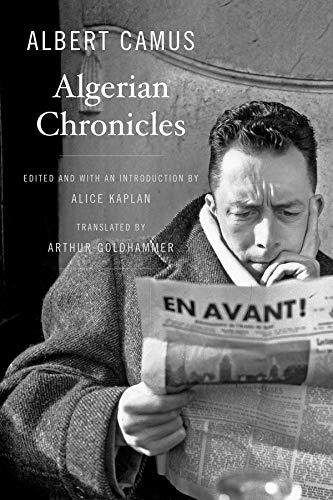

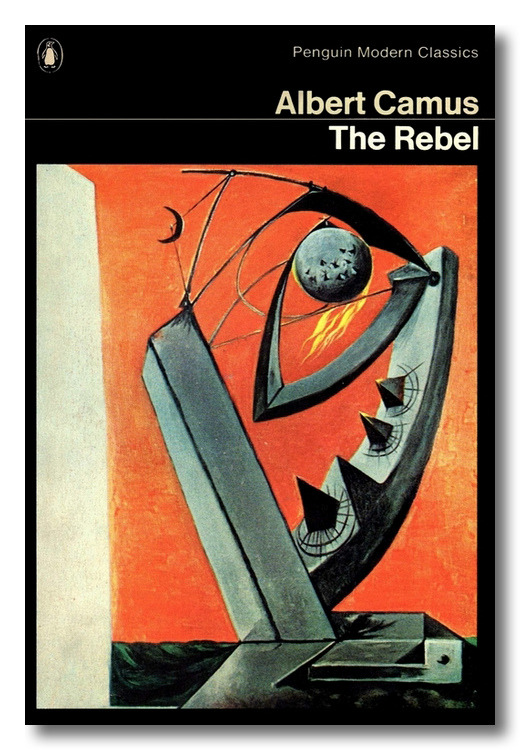
Camus was not only a great French writer. He was also a philosopher (though he never called himself that), a journalist and a playwright. If you are interested in fully understanding Camus, you must also understand his writings in other fields. "The Myth of Sisyphus" is the essay that formed the basis of the formation of a new philosophical current called absurdism. "The Rebel" continues the work started by "The Myth of Sisyphus", going much deeper into the issues related to the meaning of life, art, war, etc. Plays like "Caligula" (1938) or "The Misunderstanding" (1944) are wonderful pieces of art in the history of the theater, while summing up the entire philosophy of Camus. His journalistic articles reveal a Camus involved in society, trying to change something in one way or another through writing. "Reflections on the Guillotine" (1957) for example was an important work that contributed to the abolition of the death penalty in France. Camus never confined his writing to a single specialization, and this can be seen in the skill with which he explored the power of the word in its various forms.
5. Camus the Human – ”The First Man” (incomplete, published 1994) // ”American Journals” (1978) // ”Correspondence (1944–1959)” // ”Notebooks”

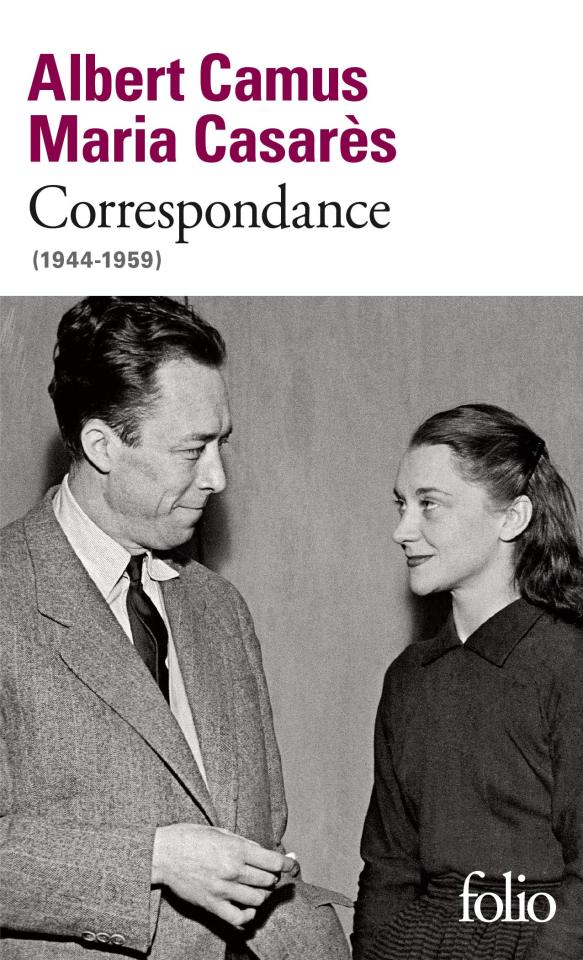
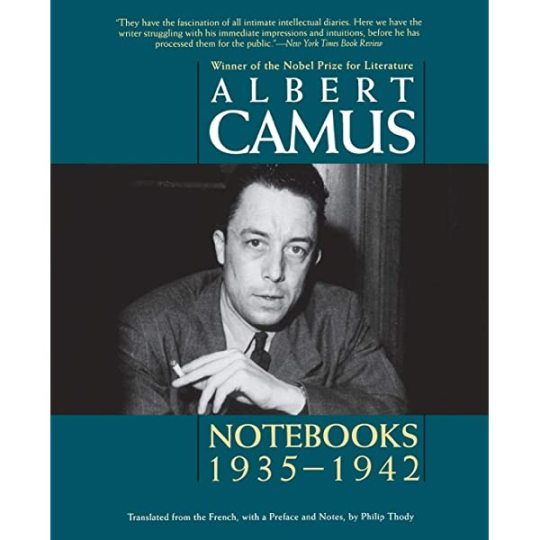

At this point, after going through all these readings, we also want to find out who was the man behind the word. Camus put many things from his personal life into writing, but in this selection we have the most personal point of view. ”The First Man” was supposed to be an autobiographical novel, but Camus died before he could finish it. The remaining manuscript was revised and published years after the author's death. "American Journals" captures a highly sensitive moment in his life, an existential crisis in Camus's life. ”Correspondence” is an exchange of letters between Camus and the woman with probably the greatest influence in his life, Maria Casares. Finally, the "Notebooks" are a collection made from the notes that Camus wrote over the years in his countless notebooks. Every intimate thought, beginning of a novel, reflection, trace of feeling, all these complete the image of Camus as a man.



Congratulations! If you have reached this point, you have managed to go through all the stages of knowledge and you can call yourself a true fan of Albert Camus. Now go and spread his teachings to other little outstiders. And don't forget, the only purpose of life is to be happy (reading Camus together).
#albert camus#camus#camus quotes#classic literature#literature#french literature#albert#the stranger#the plague#the fall#exile and the kingdom#20th century#20th century literature#classic authors#a happy death#the first man#betwixt and between#nuptials#summer#the myth of sisyphus#the rebel#philosophy#philosopher#20th century philosophy#absurdism#absurd#existentialism#the theory of the absurd#notebooks#american journals
340 notes
·
View notes
Text

"Pierre Menard, Author of the Quixote" is available to read here
*Originally published in Spanish under the title "Pierre Menard, autor del Quijote"
#short stories#short story#pierre menard author of the quixote#pierre menard autor del quijote#spanish language literature#argentinian literature#20th century literature#have you read this short fiction?#book polls#completed polls#links to text
27 notes
·
View notes
Text
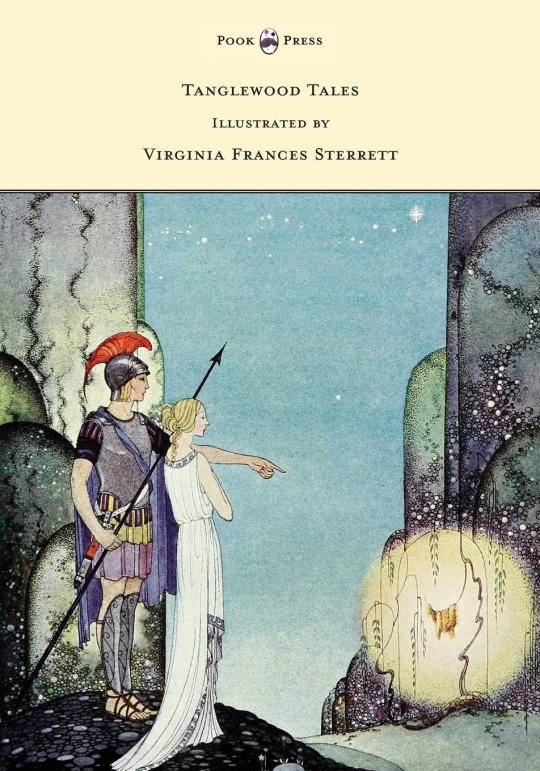
Tanglewood Tales for Boys and Girls • Virginia Frances Sterrett, illustrator • Nathaniel Hawthorne, author • 1921 • Philadelphia, Penn Publishing Company


#illustration#art#illustrator#artwork#book illustration#mythology for children#nathaniel hawthorne#early 20th century children's books#virginia frances sterrett#american illustrator#woman illustrator#american author#children's literature#children's books#vintage illustration#illustration blog#sassafras & moonshine blog
17 notes
·
View notes
Link
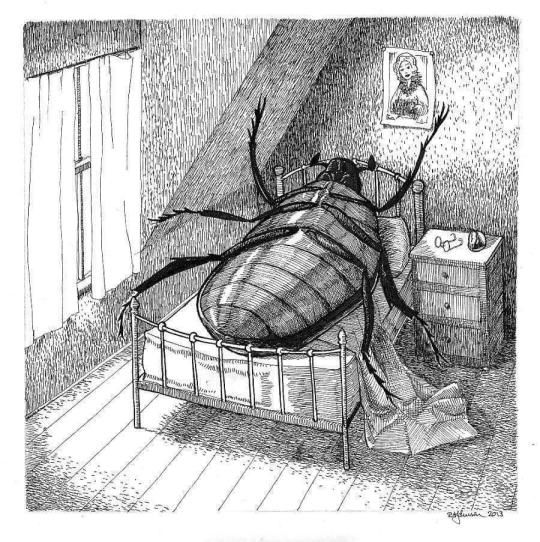
#The Metamorphosis by Franz Kafka#free audiobook#audiobooks#audio#kafka#podcast#podcasts#books#books and literature#books and libraries#books and authors#books and reading#free books#public domain#20th century literature#20th century#literature#The Metamorphosis#1900s
55 notes
·
View notes
Text

Portrait of Renée Vivien by Otto Wegener circa. 1900
#1900s#early 20th century#historical costuming#historical fashion#renee vivien#women authors#directoire#can’t tell if she’s supposed to be a muscadin or incroyable#well… she’s got her executive power#directoire dress seems to be a common costume around this time#there’s photos of her girlfriend with her also dressed in directoire fashion. but I couldn’t find them in great quality
62 notes
·
View notes
Text
I derive my personality from his. He showed me that even philosophers can be cool.

#albert camus#the stranger#philosophers#philosopher#philosophy#existentialism#absurd#absurdism#camus quotes#camus#20th century#france#french#french author#novelist#novel recommendation#french novels#writing#dark academism#dark academia memes#dark academia aesthetic#dark academia#academia#chaotic academism#chaotic academia
135 notes
·
View notes
Text

people who understand understand. you gotta
#it’s 19th-20th century author Lafcadio Hearn#who was one of the first to write about Japan in any great detail without distaste due to living there#and who is the inspiration for Touhou’s own Hearn#due to his documentation of folklore and legend in the era in which it was dying
10 notes
·
View notes
Note
🔥6 and 7?
lmao are you my Maedhros anon? sending me asks because you sense our shared distaste?
ok. VIOLENCE TIME.
6. which ship fans are the most annoying?
Russingon of course!!! Caveat that I used to enjoy Russingon greatly and I have many beloved mutuals who ship Russingon and I don't think you're annoying at all <<<333
But.
LMAO the fact that people are so insane about the ship that they'll take offense if it's included as a non-canon ship? To the point where there is at least one event where implying it's not canon is taboo? The fact that people seem to legitimately believe it was intentional subtext from Tolkien and any minimization of it is homophobic? 'Chrissy T straightwashed the Silm' is something I have read with my own two eyes (and it had more than zero notes). The fact that I think like 75% of the long fic about it has the most god awful pretentious (and incorrect) lore documents to go along with it? The fact that they tie themselves in knots making terrible arguments to explain why their relationship is OK in canon (which... why does it need to be OK in universe? forbidden love is sexy. and why do you care what Tolkien the very conservative oxford professor thought about your ship? and why do you care about what a random anon thinks about your ship? THEY ARE FICTIONAL IMMORTAL ROYALS OF AN INVENTED SPECIES MODELED AFTER MILLENIA-OLD EPICS. why would modern sentiments apply at all?) instead of 'Yeah they're fucking half-cousins deal with it, bitch.'
I will put down the knife now.
And then pick it back up, because
7. what character did you begin to hate not because of canon but because how how the fandom acts about them?
lololol OK, now I have to put Maedhros for this one. There are still a handful of people whose Maedhroses I'll read, but for the most part 'gentle giant who never meant to hurt anyone uwu' has completely turned me off the character.
Though gentle giant might be better than the full on incoherent takes I've seen. People sometimes seem to give him the most brutal, violent, callous characteristics while keeping the same 'poor Maedhros didn't mean to hurt anyone' overtones while not realizing that that is so much worse.
lol now putting down the knife for real.
#if you want canon queer ships I have some real life queer authors to rec all y'all#queer readings are always welcome#but you aren't doing queer readings#you're still stuck in authorial intent!#you haven't even arrived at 20th century lit crit#it's the 21st century gents#Tolkien would have hated you and that's ok <3#also I'm lying I've hardly read anything recently#it's very sad because I've seen things that interest me hypothetically#but I just have not been able to read fic idk why#hopefully some temporary burn out
18 notes
·
View notes
Text
"There was an emptiness about the heart of life;"
~ Virginia Woolf, Mrs Dalloway
#virginia woolf#mrs dalloway#quotes#literature#literature quotes#lit quotes#literary quotes#literary quotations#classic literature#classic lit#classic literature quotes#classic lit quotes#british author#british literature#english author#english literature#academia quotes#dark academia quote#light academia quotes#20th century lit#20th century literature#modernism#modernist literature#book quotes#e
70 notes
·
View notes
Text
there is no foreign author as influential to a group of people as Franz Kafka is to Japanese writers. It’s like Kafka is their special little guy.
#this thought has been brewing in my mind for about 7 years now#it must have something to do with murakami right? at least partially?#tho maybe I’m think that because the first time I stumbled across this question was when I read Tokyo Ghoul#because that has a LOT of Kafka references/influences but also a lot of direct mentions of murakami’s work#but aside from Murakami himself and Sui Ishida I’m also talking about Mr. Asagiri Kafka himself#game writers too kafka is goichi suda’s fave author I think & kojima has a prettyyy big Kafka reference with the odradek in death stranding#of course there are also a few 20th century authors who were influenced by his works#like sure there are a lot of people influenced by kafka’s work#I just think it’s very interesting how Japanese writers are the loudest about their love for kafka’s work#and I’m asking myself if there is anything comparable to the grip that Kafka has on Japanese writers#and how that even started?#if someone has any kind of explanation for the grip Kafka has on Japanese writers plsss pls pls enlighten me#sina’s rambling
19 notes
·
View notes
Text
Fair Use & Fandom Content
Fair Use is a doctrine in United States law that permits limited use of copyrighted material without having to first acquire permission from the copyright holder. Fair Use is one of the limitations to copyright intended to balance the interests of copyright holders with the public interest in the wider distribution and have use of creative works by allowing as a defense to copyright infringement claims certain limited uses that might otherwise be considered infringement.
Why is this posted?
There is a guide that has put in a claim barring permission for any other guides to be posted after a specified date. Frankly, such a statement is false, as in the case of fanfiction writing and all it encompasses, no one outside of the owner(s) and legal right holder(s) of said fiction can bar another from compiling, writing, drawing, or using said intellectual works. This is being posted to precursor any attempted questioning of any guides compiled and posted henceforth.
Why is this relevant?
A group of collaborators got together to compile our joint knowledge into a guide, with the intent to provide an easier way for others to search and find information. At one point, one of the three contributors decided to pull out and had stated they wanted nothing to do with the project. The other contributors still wanted this project, and there had been feedback with much interest in it; so the rest reworked what was already done in a way that would fit best with the style that the guide was going to now be in, and to honor the request of the previous individual who wanted no association with it.
Lately, a guide has been posted, with statements attempting to prevent any further guides from being posted. This is not the collaborative guide that has been in the works, it is in the final stages, and will hopefully be released soon. The intent of this post is to remind/educate others that only the creative style and wording of an individual is held under copyright, within certain conditions, but things like guides, rules, methods, etc., which can be compiled by anyone and used for educational purposes, no one individual can lay sole claim to such things. Outside of the aforementioned original creator(s) and legal right owner(s).
A lot of hard work has been put into this guide by the contributors and others who have offered assistance, and the contributors are putting forth this guide with no monetary gain. To reiterate, no one outside of the original creator(s) and legal right owner(s) can prevent others from creating their own works in fanfiction. However, using the exact style and same words as another is copyright/plagiarism, so if one does intend to use an image or written work within their own, to make sure proper credit is given.
We cannot wait to present this to you guys and are working to have it published before the end of October! I wanted to put this out there for the fandom in the hopes that you do not let any false claims hinder you from putting together your own project within the fandom.
Credits: Wikipedia | Copyright.gov | copyrightalliance.org
#yautjalover#copyright law#no one owns fanfiction#20th century fox has the rights to this property and has the actual authority to mandate that nothing can be created from it#predator#yautja
7 notes
·
View notes
Text

#short story collection#short story collections#confirmation: an anthology of african american women#various authors#amiri baraka#leroi jones#amina baraka#african american literature#black literature#american literature#english language literature#20th century literature#have you read this short fiction?#book polls#completed polls
10 notes
·
View notes
Text

Charlotte Zolotow, author (America, 1915-2013) • Maurice Sendak, illustrator (1928-2012) • Mr. Rabbit and the Lovely Present • 1963 • HarperCollins, publisher
#art#illustration#illustrator#artwork#maurice sendak#charlotte zolotow#children's book illustration#kid lit#picture book illustration#children's literature#american children's book author#american illustrator#favorite illustrator#20th century kids books#1960s picture book#sassafras and moonshine blog
4 notes
·
View notes
Text
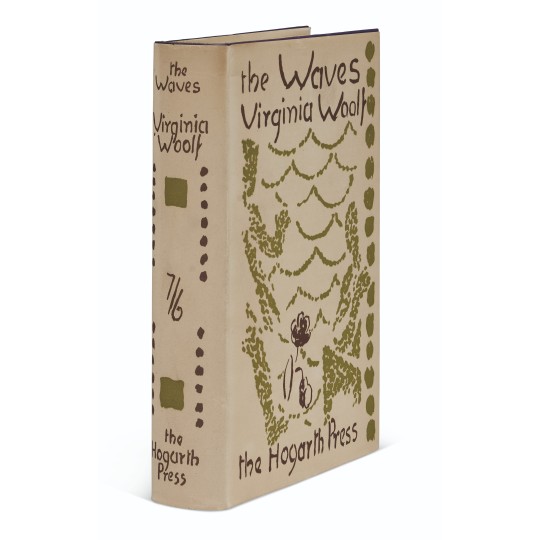

The Waves, a novel by Virginia Woolf (London: Hogarth Press, 1931).
#novel#fiction#literature#literary work#20th century novel#20th century#20th century literature#British novel#British fiction#British literature#experimental novel#experimental fiction#Virginia Woolf#The Waves#contemporary novelist#female author#female novelist#female writer#book cover#book excerpt#literary fiction
2 notes
·
View notes